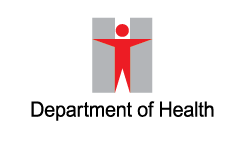Pneumococcal Infection
Click here to view the thematic webpage of Invasive Pneumococcal Disease
Causative agent
Pneumococcal infection is caused by the bacteria Streptococcus pneumoniae (pneumococcus).
Clinical features
Streptococcus pneumoniae causes a wide range of diseases, more common ones include middle ear infection (acute otitis media) and chest infection (pneumonia). It may also cause various forms of invasive pneumococcal diseases (IPD), such as infection of the brain membranes (meningitis) and blood stream (bacteraemia and sepsis). The infection can be serious or even life-threatening.
Clinical presentation depends on the site of infection:
- Middle ear infection (otitis media) can present with fever, ear pain and sometimes with discharge. It may lead to hearing loss in recurrent infection.
- Chest infection (pneumonia) can present with fever, shortness of breath, chills and productive cough. It may result in death in severe cases.
- Infection of the brain membranes (meningitis) can present with fever, stiff neck and confusion. It may result in long-term hearing loss or even death.
- Infection of the blood stream (bacteraemia and sepsis) can present with joint pain and chills. It may also present along with infection at other site, such as pneumonia and meningitis.
Mode of transmission
Pneumococci are commonly found in the nose and throat of healthy people, particularly in children. Occasionally, these bacteria will cause an infection. They mainly spread through droplets via coughing and sneezing, close contact with the patients or contact with materials soiled with the bacteria.
Incubation period
About 1 - 3 days.
High-risk groups
- Young children
- The elderly
- Persons with:
- history of IPD
- weakened immunity, such as asplenic patients, cancer patients, HIV/ AIDS patients
- chronic illnesses such as diabetes mellitus
- cochlear (inner ear) implants
Management
The disease can be treated with appropriate antibiotics. However, the emergence of drug-resistant strains of pneumococci has made treatment more difficult.
Prevention
Pneumococcal vaccination
- There are several types of pneumococcal vaccines. They are safe and effective.
- Newborns should follow the schedule recommended in the "Hong Kong Childhood Immunisation Programme" for vaccination. Parents may consult family doctors or Maternal and Child Health Centres for details.
- Elders aged 65 years or above should also get pneumococcal vaccination. They may get either free or subsidised pneumococcal vaccines under the "Government Vaccination Programme" or "Vaccination Subsidy Scheme".
- Persons in the high-risk groups should consult their family doctors on having the vaccination for personal protection.
Maintain good personal hygiene
- Perform hand hygiene frequently, especially before touching the mouth, nose or eyes; after touching public installations such as handrails or door knobs; or when hands are contaminated by respiratory secretion after coughing or sneezing. Wash hands with liquid soap and water, and rub for at least 20 seconds. Then rinse with water and dry with a disposable paper towel or hand dryer. If hand washing facilities are not available, or when hands are not visibly soiled, hand hygiene with 70 to 80% alcohol-based handrub is an effective alternative.
- Cover your nose and mouth with tissue paper when sneezing or coughing. Dispose of soiled tissues into a lidded rubbish bin, then wash hands thoroughly.
- When having respiratory symptoms, wear a surgical mask, refrain from work or attending class at school, avoid going to crowded places and seek medical advice promptly.
- Build up good body immunity by having a balanced diet, regular exercise and adequate rest, do not smoke and avoid alcohol consumption.
Maintain good environmental hygiene
- Regularly clean and disinfect frequently touched surfaces such as furniture, toys and commonly shared items with 1:99 diluted household bleach (mixing 1 part of 5.25% bleach with 99 parts of water), leave for 15 - 30 minutes, and then rinse with water and keep dry. For metallic surface, disinfect with 70% alcohol.
- Use absorbent disposable towels to wipe away obvious contaminants such as respiratory secretions, then disinfect the surface and neighbouring areas with 1:49 diluted household bleach (mixing 1 part of 5.25% bleach with 49 parts of water), leave for 15 - 30 minutes and then rinse with water and keep dry. For metallic surface, disinfect with 70% alcohol.
- Maintain good indoor ventilation. Avoid going to crowded or poorly ventilated public places; high-risk individuals may consider putting on surgical masks while in such places.
















